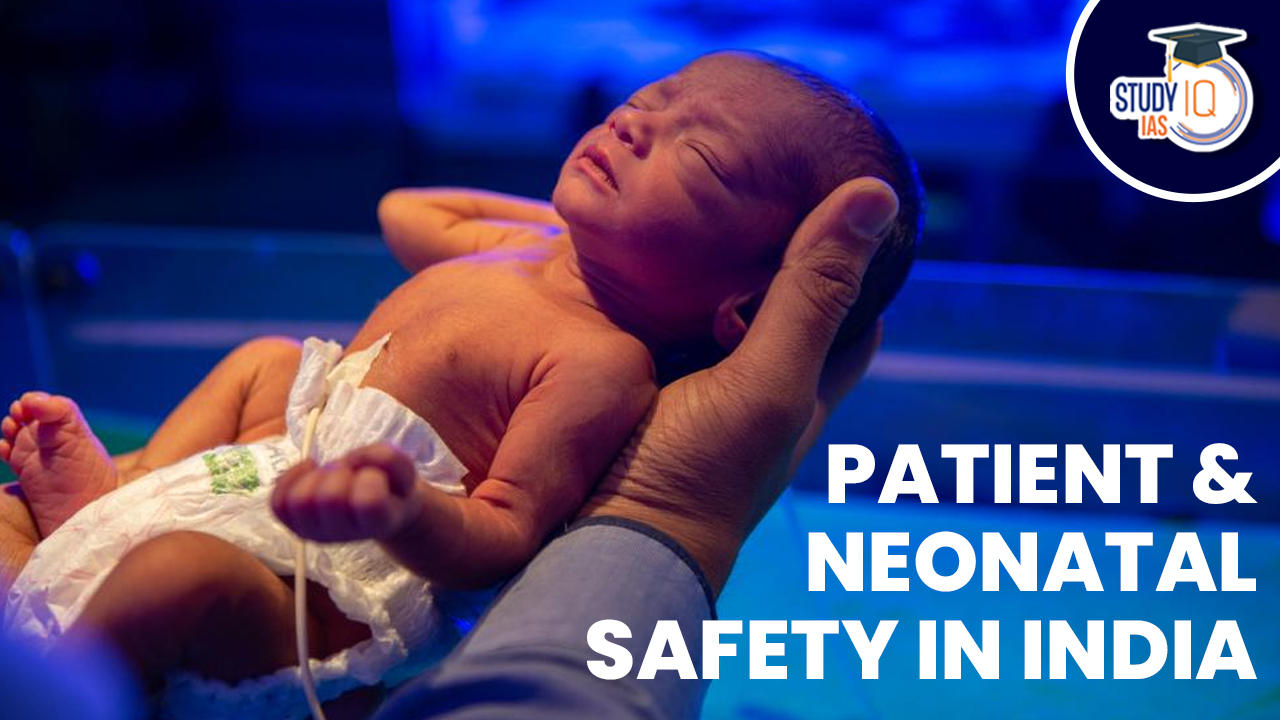Table of Contents
Context: Former British nurse was convicted of murdering seven babies and trying to kill six others while working at a hospital in U.K. between June 2015 and June 2016.
Introduction: Unsafe care across the globe
- The estimated burden of unsafe care is 1 in 10 patients receiving health care. It is estimated that globally of the 421 million patients hospitalized annually, 42.7 million patients suffer from adverse events.
- Major areas of concern are hospital associated infections (HAI), unsafe surgeries, unsafe injections, safe births, medication safety, blood safety and faulty medical devices.
- In 2013, the unsafe care is third in rank of causes of death globally after heart disease and cancer.
- Considering the magnitude of the problem, unsafe care is one of the major public health problems. Over past ten years patient safety has been recognized as an issue of global importance, but much work remains to be done.
Current Situation of Patient Safety in India
- As per the Union Health Ministry document titled, ‘National Patient Safety Implementation Framework (2018-2025):
- Patient safety is a fundamental element of public healthcare and is defined as the freedom for a patient from unnecessary harm or potential harm associated with provision of healthcare.
- Patients in India are protected under multiple layers of law that are largely fragmented. The first idea of patient safety is enshrined in the Hippocratic Oath.
- The Hippocratic Oath is a historic ethical code that outlines the moral and professional responsibilities of physicians.
- It is attributed to Hippocrates, an ancient Greek physician often referred to as the “Father of Medicine.”
- In the oath, the physician pledges to prescribe only beneficial treatments, according to his abilities and judgment; to refrain from causing harm or hurt; and to live an exemplary personal and professional life.
- Additionally, the Consumer Protection Act deals with medical negligence and deficiency of services;
- Legal rights of the patients are set out in the Clinical Establishment Act, and
- The National Pharmaceutical Pricing Authority and Drugs Controller General of India have mechanisms to see that patients’ rights in terms of medication and devices are protected and that they are not overcharged, among other things.
About Neonatal Safety Protocols in India
- A new-born infant, or neonate, is a child under 28 days of age. During these first 28 days of life, the child is at highest risk of dying.
- There are no exclusive rules for neonatal care and safety, or protection against external harm in Indian hospitals.
- However, there are provisions and checks against issues like inadvertent mix-up of babies at birth and abduction.
Issues faced by the Neonates
- Infant Mortality Rate:
- According to the WHO, in 2019, 47% of all under-five deaths occurred in the new-born period with about one third dying on the day of birth and close to three quarter dying within the first week of life.
- The current infant mortality rate for India in 2023 is 26.6 deaths per 1,000 live births, a 3.89% decline from 2022.
- Children who die within the first 28 days of birth suffer from conditions and diseases associated with lack of quality care at birth or skilled care and treatment immediately after birth and in the first days of life.
- Pre-term Birth and related complications:
- Pre-term birth, intrapartum-related complications (birth asphyxia or lack of breathing at birth), infections and birth defects cause most neonatal deaths.
- Women who receive midwife-led continuity of care (MLCC) provided by professional midwives, educated, and regulated to internationals standards, are 16% less likely to lose their baby and 24% less likely to experience pre-term birth.





















 WhatsApp
WhatsApp